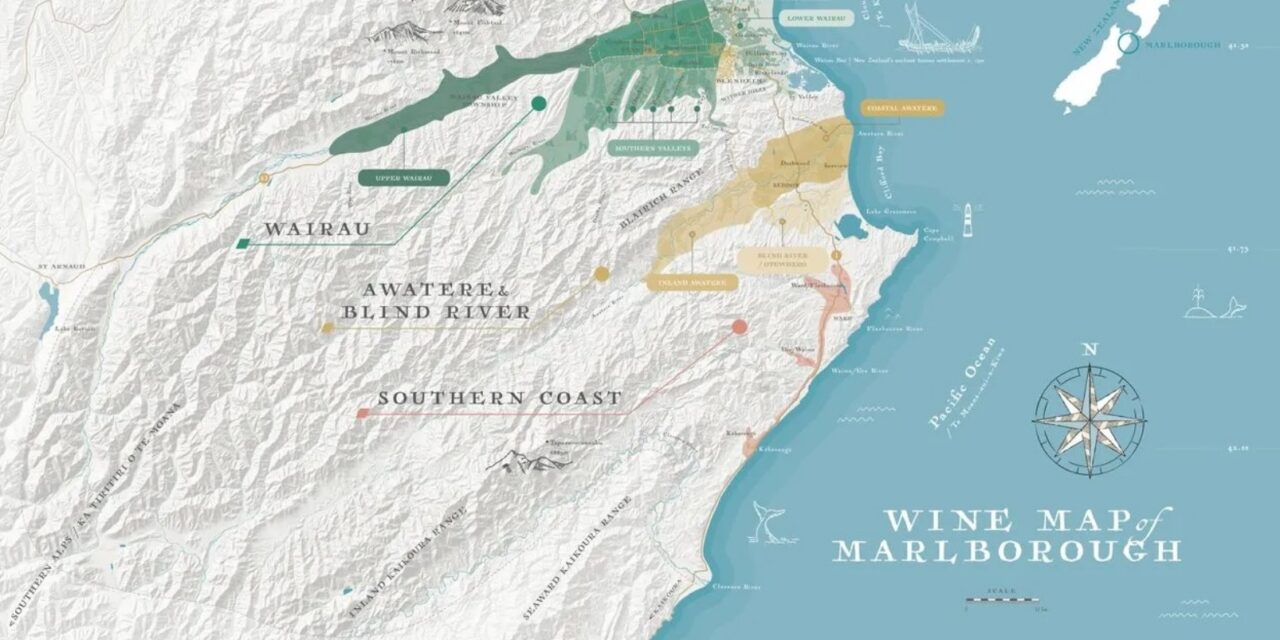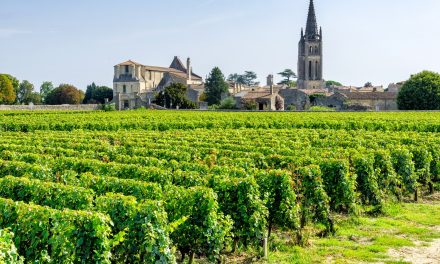A New Path for Wine Enthusiasts: Detailed Cartography to Illuminate the Diversity of Marlborough’s Wine Regions
BLENHEIM – It is not a hidden fact that the vineyards of Marlborough in New Zealand have made their mark on the global wine industry in the past five decades. With the first commercial vineyards planted in Marlborough fifty years ago, the region has now expanded to occupy approximately 30,000 hectares of vineyards. As AMW chair John Buchanan articulates, “Naturally, subregions with distinct microclimates and stylistic features have been identified over this time. The Wine Map of Marlborough represents the first genuine attempt to map these in a detailed way.”
The Appellation Marlborough Wine (AMW) organization was established in 2018 by its members to safeguard the integrity, authenticity, and brand value of wines produced in the Marlborough region.
The map project was spearheaded by the Marlborough Wine Map Collective (MWMC), a dedicated team of five AMW members. Over a period of two years, the group, in collaboration with Geographx cartographer Roger Smith and local designer Megan Boreham, took on the meticulous task of defining and capturing Marlborough’s unique subregional hierarchy.
As John Buchanan puts it, “The resulting ‘Wine Map of Marlborough’ is a vital resource in understanding the subregional detail and diversity of Marlborough. We look forward to making it available to a wider audience, including industry colleagues, wine educators, and engaged consumers.”
The co-owners of Blank Canvas, who were instrumental in creating the wine map, noted that Marlborough winemakers have long acknowledged the region’s subregional identities. However, the lack of a comprehensive map has hampered effective communication of this diversity. The assumption that Marlborough is homogeneous is a misconception they hope the new map will dispel, paving the way for a more nuanced understanding of the region.
The wine map, a first edition, lays the foundation for a deeper appreciation of Appellation Marlborough’s complexities. As Matt Thomson of MWMC points out, Marlborough’s broad range of soils, micro-climates, and ultimately terroirs allow for the creation of varied expressions of sauvignon blanc. The vision is for wine enthusiasts to use the map to identify the subregional style they prefer.
AMW committee member Simon Barker expresses gratitude to the MWMC for creating the comprehensive map. He underlines the urgency of documenting Marlborough’s wine-growing subregions and regional subsets, which are key to the region’s winemaking legacy.
Matt Thomson warns against the dilution of Marlborough’s brand value due to a lack of regulatory control, a risk that has emerged alongside the region’s rapid success and market growth.
The Marlborough Wine Map is viewed as an essential tool in promoting understanding of the region’s diversity. As Simon Waghorn of Astrolabe points out, “The Marlborough appellation cannot and should not be simplified to the provincial boundary, we must take a lead from pioneering wine regions who’ve defined their land by geology and geography.”
John Buchanan stresses that Marlborough wines displaying the AMW icon assure consumers of origin and authenticity. The Marlborough Wine Map bolsters AMW’s mission to promote quality Marlborough wine and clearly emphasizes the significance of origin.
As for the Marlborough Wine Map, you can learn more about the collective, the map’s evolution, and the incentives behind its development by visiting the AMW website. The map will also be available for purchase directly from AMW, with profits funneled back to the MWMC for further research and development.










